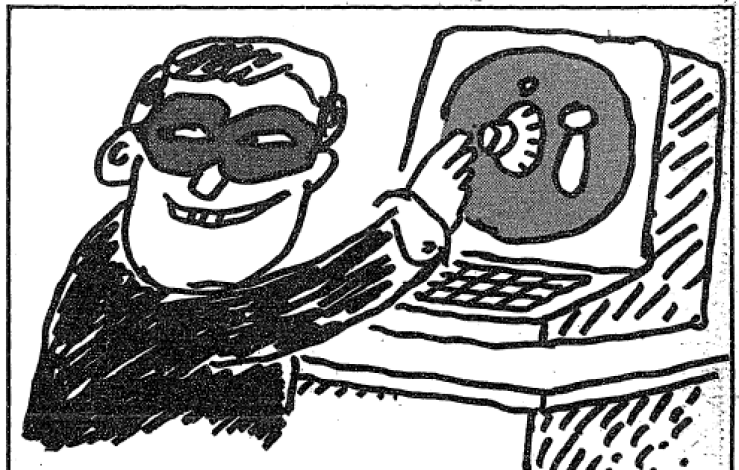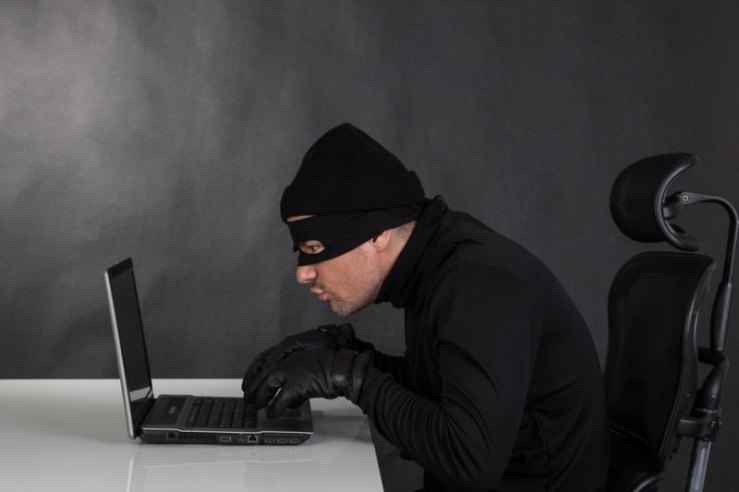“Hacking,” according to Evgeny Morozov, is the art of “exploiting existing resources to produce more.” The MIT Tech Model Railroad Club, a student club credited with coining the technophilic meaning of the word, defined a “hack” in its 1959 dictionary as “something done without constructive end,” an “entropy booster.” For the TMRC, hacking is less like cyber-warfare and more like “pranking,” a subversive but not malicious demonstration of intellect and curiosity. Meanwhile, insists the Daily Kos, Russia “hacked the election” by “undermining people’s faith in democracy.” In her book Lifehacker: 88 Tech Tick to Turbocharge Your Day, Gina Trapani writes that a “lifehacker” “uses workarounds and shortcuts to overcome everyday difficulties of the modern worker: an interrupt-driven existence of too much to do and too many distractions to keep you from doing it.”
As other historians of the term like have observed, the meaning of “hack” vacillates between two poles: either mischief or malice, rebellion or authority, the dark side and the light. This duality was apparent in one of the first investigations of “hacking” to appear in the New York Times, in August 1983. In a lengthy interview, Geoffrey Goodfellow, a computer security researcher in a town called Menlo Park, CA, described the hacker this way:
A hacker is someone who programs computers for the sheer fun of it rather than, say, just theorizing about programming. A hacker could be described as a person capable of appreciating the irony and beauty—or as we refer to it, the ‘hack value’—of a program. But another part, unfortunately, is a little bit on the dark side. There is a malcious of inquisitive hacker, or meddler, who would like to discover information by poking around.
The article was illustrated by what may be the first appearance of the stock-photo caricature of the hacker (more on this below): a grinning masked catburglar, cracking a computer depicted as a safe.

The verb’s current meaning—to covertly access a complex technological network, in order to manipulate it for some end unintended by its designer or owner—originates with the telephone. The first “hacks” invaded telephone switchboards, and from there, the word expanded to other kinds of communication networks. If this meaning has any relationship to the other meaning of “hack”–to attack aggressively with a heavy or sharp object– it would seem to be ironic, since the hacker’s dangerous allure comes from his secrecy and ingenuity. The rhyme with “crack”–as in to crack a code–seems important here, though maybe I’m just swayed by that illustration.
Let’s leave the etymology aside and move onto the heavier stuff. Do you with to proceed? If yes, click the video link below.
For so-called “white-collar” workers bound by the computer, part of hacking’s double meaning lies in its power to either multiply our drudgery or to liberate us from it. Danny O’Brien, the tech writer who coined the term “lifehack,” described it as the latter–for him the lifehack is a form of self-actualization. In his detailed notes on O’Brien’s first lectures on the subject, Cory Doctorow records O’Brien’s origin story for the concept: “I resolved to adapt the habits of the world’s most organized and prolific geeks,” O’Brien said, “and become a Charles Atlas of organization.” In response, Morozov reads the fetish for lifehacking as an ideal for an age of austerity, whatever its subversive origins: hacking is to “do more with less,” to maximize productivity via the more efficient exploitation of resources and labor power.
The cyberphobic fear of computing technology—its dehumanizing power and its potential for deceit and surveillance—has returned in the controversy over the Russian government’s alleged interference in the recent presidential elections. To “hack” our democracy is to cheat, to colonize with sneaky technological tricks a process which, we like to imagine, is driven by fair dealing, human passions, deliberative conversation, and what the Daily Kos calls “faith.” The fact that our “democracy,” by which is meant national elections, are pretty well “hacked” in this sense by other mass media technologies goes unremarked by those determined to read Donald Trump’s victory as a conspiracy that has come from outside the country or, as Owen Wilson’s character puts it in Zoolander, from “inside the computer!”
“In the computer…it’s so simple!”
Hansel the male model may be an idiot, but in his incompetent fixation on the physical computer as the source of his enemy’s power, he is indistinguishable from much of the liberal punditocracy, with its nostalgic Cold-War paranoia about the Russians’ dangerous gadgets.
The mysterious power of the “hacker” figure owes much to what Fredric Jameson, in Postmodernism, called the “hysterical sublime.” By this phrase Jameson refers to a generally hapless, paranoid attempt to make sense of the computing technologies of our time. The steam engines, turbines, or great factories of an earlier machine age could be painted, photographed, filmed in a way that provoked terror, awe, and exhilaration.

By contrast, the microchips and digital networks of our age cannot easily be seen, understood, or represented. We know they control our lives, but few of us can begin to explain what they are, how they work, or who or what controls them. Their unintelligibility leads easily to paranoid freakouts like the Russian “hacking” scandal, in which the computing wizardry at issue is nothing more complex than a run-of-the-mill “phishing” scam.
Meanwhile, at CIA headquarters
This paranoia is captured best by the “hacker” photos produced by stock photo agencies, used to cheaply illustrate articles on identity theft and cybersecurity. They trade in very old visual cliches borrowed from detective stories and pirate lore—like thieves in masks and eye-patches, Jolly Rogers, and oddest of all, magnifying glasses. (The hysterical sublime, Jameson writes, is a camp aesthetic.) The hacker’s digital invisibility is represented by his mask, and he sits at a laptop equipped with quaint, old metonyms for “burglary,” like guns or crowbars, which are obviously and comically irrelevant to his work.
At first glance, the Hamburglar-on-a-laptop pictured below might look like a ludicrously naïve representation of computing technology, aimed at noob grandparents and technophobic idiots. Even if he doesn’t capture what a “hacker” actually does (to wit: some kind of typing) they do capture quite what almost all of us know (nothing) and fear (a lot) about him. The “technology of contemporary society,” writes Jameson, “is mesmerizing and fascinating…because it seems to offer some privileged representational shorthand for grasping a network of power and control even more difficult for our minds and imaginations to grasp—namely the whole decentered global network of the third stage of capital itself.” From the point of view of multinational capitalism, in other words, we are all noob idiots.

The stock photos tell us more about the archetypal cyberphobic image of the “hacker.” He is male, most of the time, and he is white, in many accounts. He is a solitary, secretive, and invisible master of technologies we cannot see.
The cyberphobic figure of the “hacker” represents computing technology as a dehumanizing force: the hacker takes our identities and our “faith,” surveils our private thoughts and intimate moments. He’s masked and faceless himself, which is important, given the national and often racial otherness of the hacker figure. The bad hacker is often foreign: in our recent headlines, the DNC hacker is Russian. His namesake, the original Guccifer, is Romanian. And as Martin Kevorkian argued in Color Monitors, his fascinating study of the Black male body in cyberphobic popular culture, the computing expert in popular cyberphobic narratives is very often Black. The argument may seem counterintuitive: aren’t computer nerds always white, male, and young? But examples abound: think of Miles Dyson, Joe Morton’s character in Terminator 2, the creator of Skynet; Link and Tank the Operator in The Matrix, to say nothing of Morpheus and the rest of the crew of the Nebuchadnezzar; and Jad, the Pre-Crime technician of Minority Report. From the trailers I’ve seen for The Circle, a new thriller about an all-powerful Silicon Valley firm, John Boyega plays the brilliant programmer who turns against his creation when it is co-opted by the profiteering corporation. As Kevorkian suggests, in these narratives the African American male character, a figure of hyper-embodiment in American culture generally, emerges as the sacrificial figure of redemption within the machines that threaten to disembody us all. Miles Dyson must sacrifice himself when the horror of Skynet’s self-awareness is revealed to him. Here, the hacker’s duality is most clear: he is the face of the machine, and he is its human undoing.
“It’s not every day you find out you’re responsible for 3 billion deaths.”
Lifehacking
As critics like Morozov and Nikil Saval have observed, “lifehacking” owes a lot to Frederick Winslow Taylor, the father of scientific management. Taylor set out to replace the “rule of thumb,” in which workers worked at their own pace and by traditional standards, with more regularized, rationalized methods. “The management must take over and perform much of the work which is now left to the men; almost every act of the workman should be preceded by one or more preparatory acts of the management which enable him to do his work better and quicker than he otherwise could,” he wrote in The Principles of Scientific Management. By contrast, the appeal of “lifehacking” is that it is self-directed—an efficiency precisely “left to the men.” But this sense of self-direction was also the goal of Taylor’s system: “each man should daily be taught by and receive the most friendly help from those who are over him, instead of being, at the one extreme, driven or coerced by his bosses, and at the other left to his own unaided devices,” he wrote. Unless the workers “buy in,” in the contemporary parlance, the hierarchical regime of scientific management would just engender more resentment and more shirking.
“Lifehacking” does retain some trace of the “hack’s” subversive meaning, since Trapani presents it as a form of resistance to overwork and surveillance in the white-collar office. Rather than resistance, though, what the “lifehack” offers is accommodation. And in the service sector, where workers have even less control over their time, “lifehacks” wouldn’t fly. “Hacking” the scheduling software that traps service workers in at-will, part-time, so-called “flexible” work would just get you fired, or arrested, or both.
So if lifehacking is just a form of white-collar Taylorism, why call it “lifehacking”? Why not call it “work-hacking”? As the Lifehacker blog shows, the phrase has expanded to all forms of non-working life. Leisure, travel, sleeping, children: virtually anything can be “hacked.” Like the phrase “work-life balance,” which subsumes one’s “life” within “work,” the “lifehack” is another way in which the demands of ceaseless productivity penetrate our daily, non-working lives. As Saval puts it: “Being alive is easier, it turns out, if you treat it like a job.”
In an interview with Lifehacker, O’Brien describes the concept’s appeal in a revealing way.
So the idea of life hacks is just really appealing to geeks, because it’s an expression of this huge hope that you can actually hack life in this way, that you might make it a bit more bearable without having to swallow or understand the whole thing.
I expected that there was a “But…” coming at the end of this paragraph, but there isn’t. This vision of the “hack” remains solidly on the bright side of the word’s double meaning. Lifehacks articulate the “huge hope” that modern capitalism’s complex problems are responsive to discrete solutions, that contemporary life is, contrary to appearances, actually bearable. The answer, Hansel tells us, is inside the computer!





